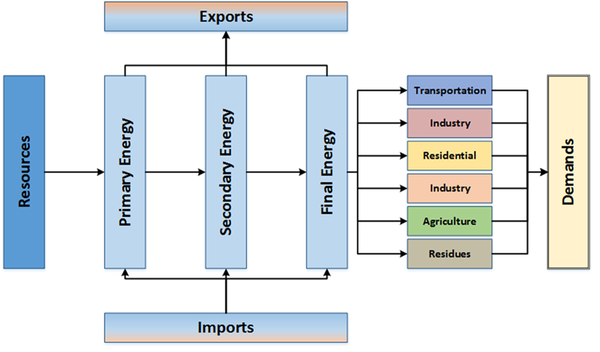Energy - COFFEE-TEA
| Corresponding documentation | |
|---|---|
| Previous versions | |
| Model information | |
| Model link | |
| Institution | COPPE/UFRJ (Cenergia), Brazil, http://www.cenergialab.coppe.ufrj.br/. |
| Solution concept | General equilibrium (closed economy) |
| Solution method | The COFFEE model is solved through Linear Programming (LP). The TEA model is formulated as a mixed complementary problem (MCP) and is solved through Mathematical Programming System for General Equilibrium -- MPSGE within GAMS using the PATH solver. |
| Anticipation | |
COFFEE is designed to meet the demand for energy services (exogenous whether run in a stand-alone basis or when linked to the TEA model), given the competition between technologies and energy sources, with the objective of minimizing the total cost of the system. In COFFEE, the energy sector includes the main elements such as resources and conversion technologies which are used and flow through the different levels of the energy system. <xr id="fig:Energy"/> shows the representation of the energy system in COFFEE.
<figure id="fig:Energy">
</figure>.
The representation of the energy sector in the TEA model is based on the COFFEE model. The soft-link with COFFEE improves energy system analysis, achieving a more comprehensive representation of the energy system. This feature is particularly interesting because COFFEE describes energy conversion technologies based on discrete techniques with pre-defined technological (size, lead time, efficiency, availability, etc.) and economic (overnight costs, fixed and variable O&M costs, contingency factors etc.) variables, thus capturing technological deployment over time in a least cost approach.
The linking procedure between the models relies on base year data harmonization that includes:
- energy production and consumption (fossil fuel used in electricity generation, fuel plants energy consumption and non-energy use);
- explicit technological representation of nuclear, hydro, wind, solar and biomass sources;
- implementation of autonomous energy efficiency improvement (AEEI);
- share of power generation and energy trends; and
- GHG emissions (CO2, CH4 and N2O).
Data for electricity generation (in energy physical units) and the shares of production factors (capital, labor, services, resources, fuel and land) are inputted into TEA in order to explicitly represent nuclear, hydro, wind, solar and biomass technologies. The production functions of these technologies were changed from CES to typical Leontief structures in order to facilitate that results from COFFEE could be completely embedded by the TEA model. Thus, the substitution elasticity between the different energy inputs is set to equal zero so that there is no substitutability between factors. The power generation branch has fixed input proportions and the penetration of different technologies carriers is determined by the COFFEE model.
